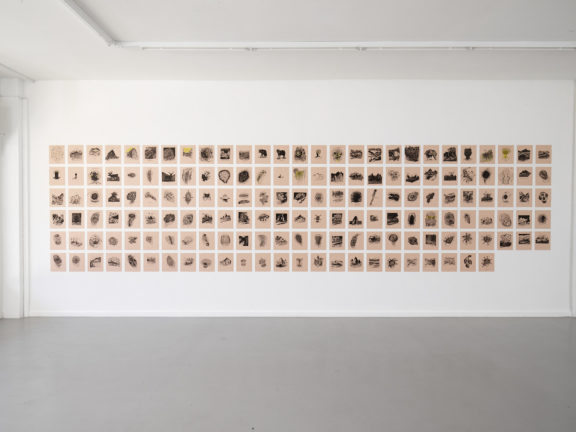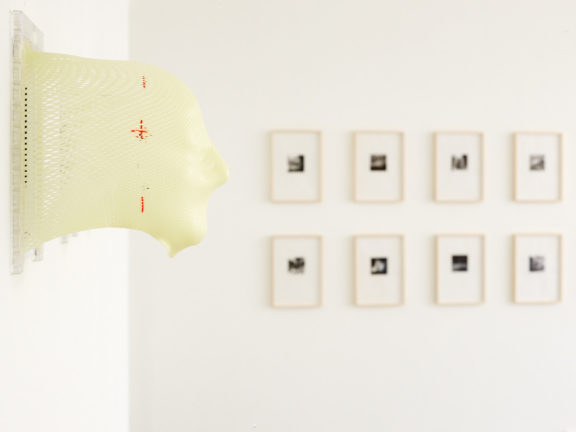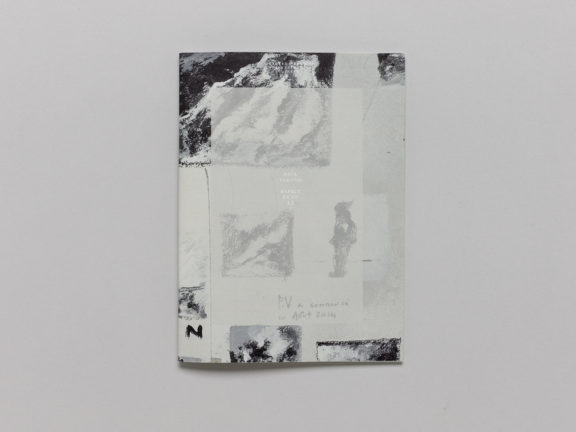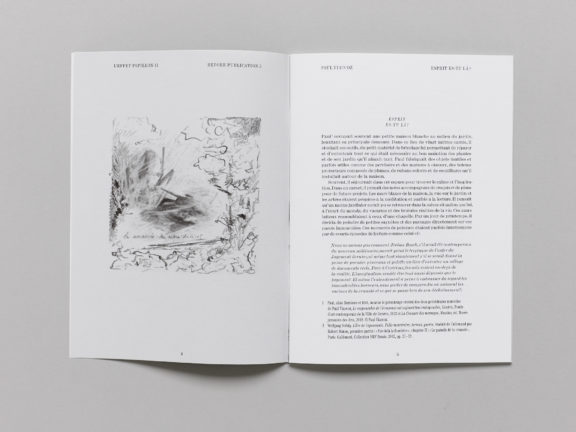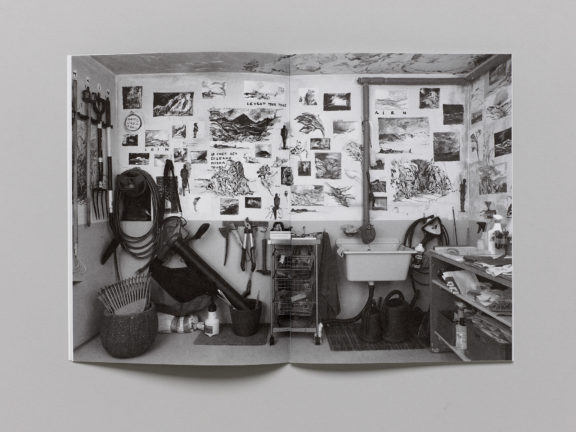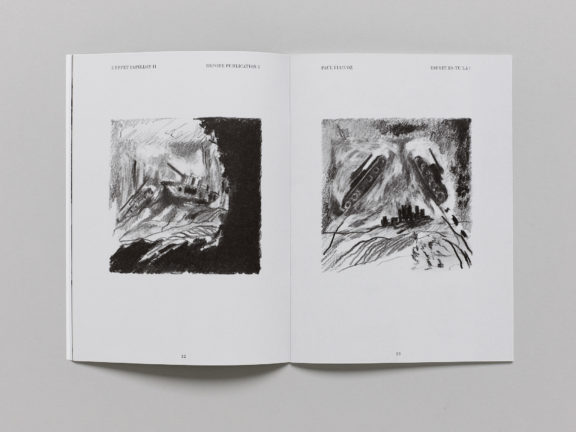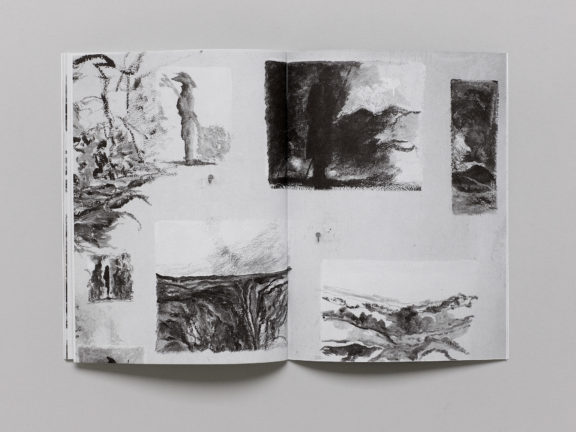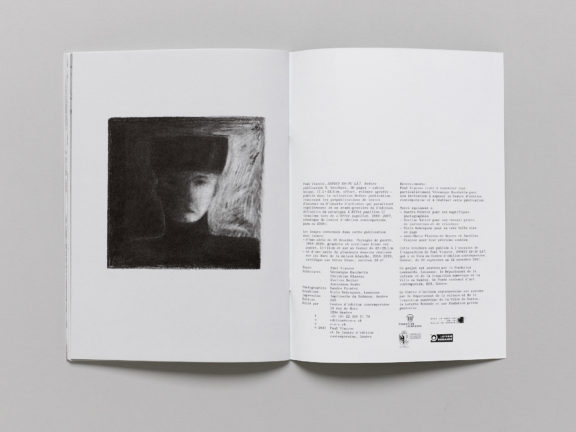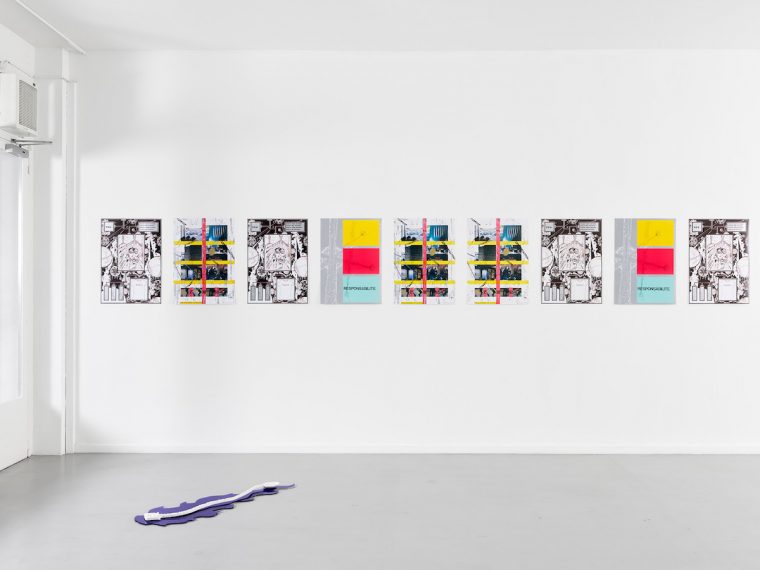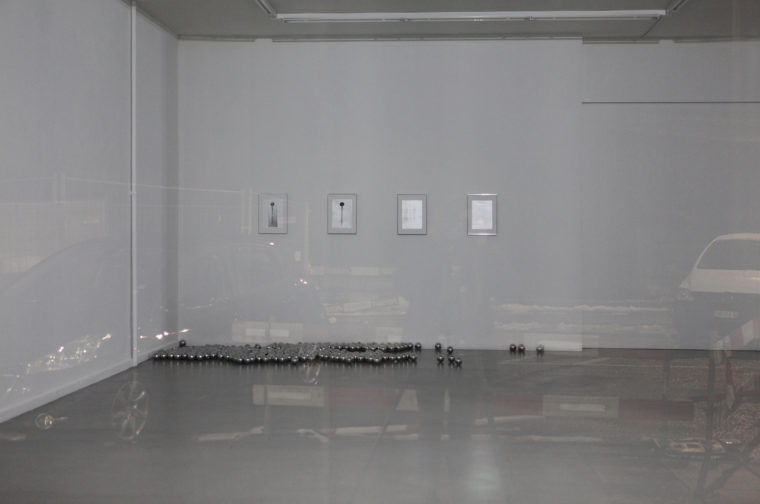Paul Viaccoz
ESPRIT ES-TU LÀ ?
From October 1st to November 12, 2021
Opening Thursday September 30, 2021, 2 PM – 8 PM
ESPRIT ES-TU LÀ?, CEC, 2021. © Sandra Pointet
ESPRIT ES-TU LÀ ?, CEC, 2021. © Sandra Pointet
« … Souvent, il séjournait dans cet espace pour trouver le calme et l’inspiration. Dans un carnet, il prenait des notes accompagnées de croquis et de plans pour de futurs projets. Les murs blancs de la maison, la vue sur le jardin et les arbres étaient propices à la méditation et parfois à la lecture. Il pensait qu’un moine jardinier aurait pu se retrouver dans la même situation que lui, à l’écart du monde, du vacarme et des brutales réalités de la vie. Ces murs laiteux ressemblaient à ceux d’une chapelle. Par un jour de printemps, il décida de peindre de petites saynètes et des paysages directement sur ces parois immaculées. … »
Extract from the text by Paul Viaccoz, ESPRIT ES-TU LÀ ?, published in Before publication 5, éd. CEC, 2021.
Esprit es-tu là (spirit are you there)? A question that expresses fear, skepticism but perhaps also the lightness of a spiritualist seance. Could Paul Viaccoz be trying out divination methods? Might his work as an artist enable him to explore unsuspected territories, set between dualizing and ultra-consciousness, and to experience the pleasure and capacity of escaping, of rising up and leaving this world?
In a back and forth between magic and the limits of science, between illusion and reality, his drawings, painted murals and assemblages of objects oscillate between observations, threats and predictions, in a vision that is both surreal and appalled by the violence and horror of the present and its deadly outbreaks of wars, diseases and pandemics.
His drawings cover a hundred or so sheets and even encroach on the walls of his studio. This mural practice is the expression of a very free extension of his readings, thoughts and meditations. Entrenchment in this little garden house that he calls the small white house, allows him to self-reflect and gain perspective, somewhere between dream and presage.
Producing large numbers of paintings or drawings and painting directly on walls also reminds us of the spiritualist artists of the early 20th century or the 1970s, closeted in small spaces and even in their own homes, whose artworks, drawings, paintings and even their walls served as a medium and offered them a complete mental and hypnotic immersion in the development of their creative work, going far beyond conventional formats.
The presentation by Paul Viaccoz comprises two series of drawings, one on braille paper, while the other incorporates several Paysages de guerre, as well as an installation of three radiotherapy Masques.
This exhibition is accompanied by a publication of the same name, which brings together details of the drawn walls in the small white house, a selection of Paysages de guerre and a text by the artist in which Paul, alias Damiano and ПОЛ, the central character in two previous short stories, Le responsable de l’économat est aujourd’hui indisponible (FMAC, Geneva, 2012) and La censure des messages, (Musée jurassien des Arts, Moutier, 2018), evokes the experience of isolation. This short text frames two quotations from Wolfgang Sofsky’s book, L’Ère de l’épouvante. Folie meurtrière, terreur, guerre (Gallimard, Paris, 2002), which attests to the difficulties of representing cruelty, violence and war.
This work joins the Before publication series, published by the CEC, and is linked to the second volume of the CEC catalogue, L’Effet papillon II, 2008 (L’Effet papillon II, 2008), which will cover the activity of the Centre d’édition contemporaine from 2008 onwards, following on from the first book of the same title, which covers the period from 1989 to 2007.
A small eight-page brochure is added to the press release, presenting images of two Murs shamaniques, created on the inner walls of the artist’s house, where day after day he has assembled objects found in nature or in everyday life, as well as souvenirs, fetishes and talismans, juxtaposed or combined with photographs, drawings, video screenshots, postcards, masks, musical instruments, skulls, sabres, dried flowers, feathers, jewelry and embroideries. This collection of objects, images and texts forms a mural jigsaw that he rearranges according to his mood and thoughts or external events. The walls of this personal studiolo construct a language whose subtext remains cryptic and secret, an intimate, poetic and ritualized altar, bordering on exorcism, in which the figure of the artist is interwoven with that of the shaman.
ESPRIT ES-TU LÀ ? Before publication 5, ed. of the CEC, 2021. © Sandra Pointet
ESPRIT ES-TU LÀ ? Before publication 5, ed. of the CEC, 2021. © Sandra Pointet
ESPRIT ES-TU LÀ ? Before publication 5, ed. of the CEC, 2021. © Sandra Pointet
ESPRIT ES-TU LÀ ? Before publication 5, ed. of the CEC, 2021. © Sandra Pointet
ESPRIT ES-TU LÀ ? Before publication 5, ed. of the CEC, 2021. © Sandra Pointet
ESPRIT ES-TU LÀ ? Before publication 5, ed. of the CEC, 2021. © Sandra Pointet
